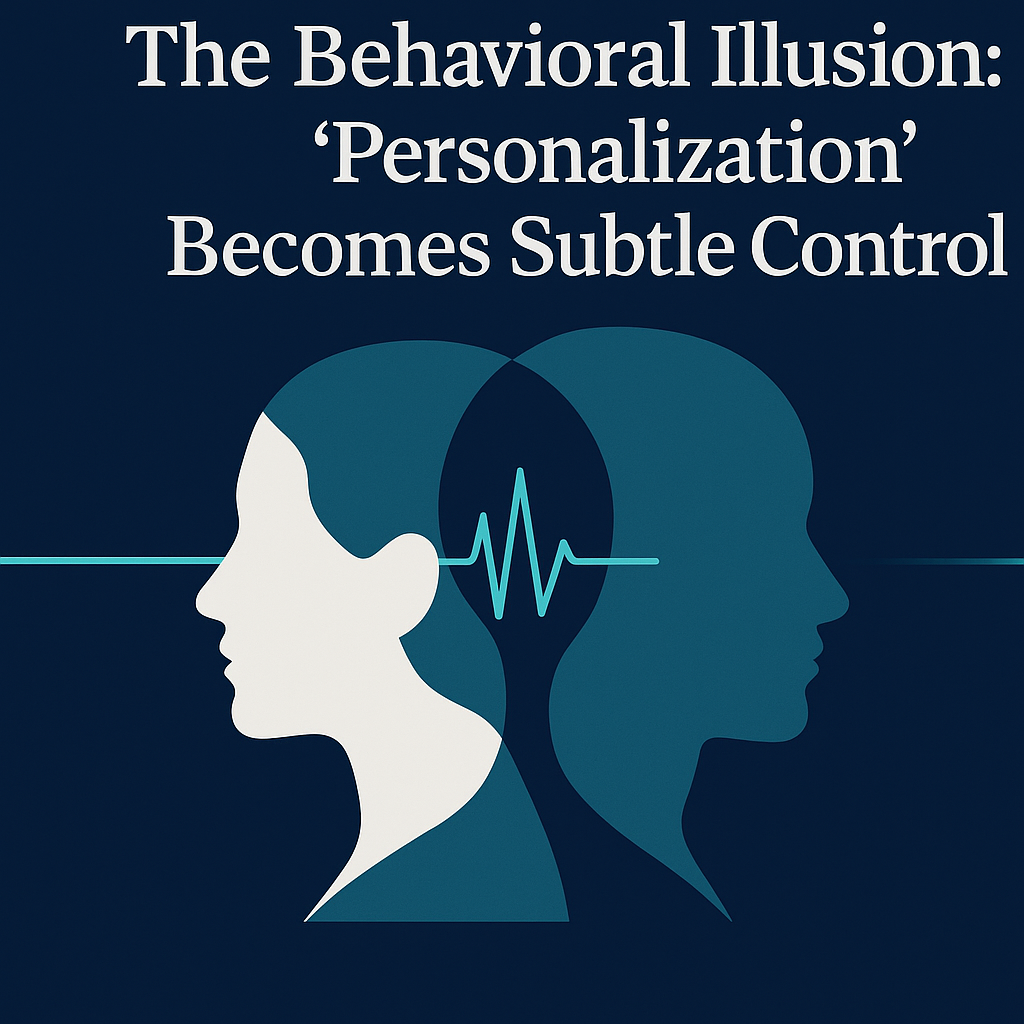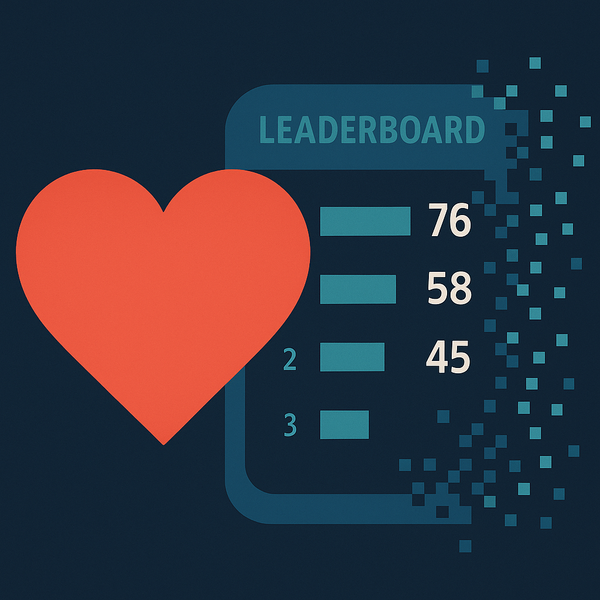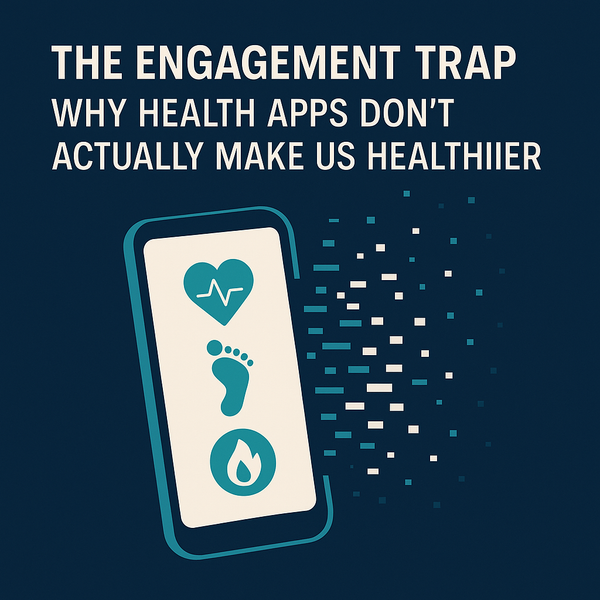The Behavioral Illusion: When “Personalization” Becomes Subtle Control

Key Takeaways
- What we call personalization in digital health often masks predictive control.
- The line between helpful nudges and behavioral manipulation is vanishingly thin.
- Algorithms optimize for engagement, not autonomy, turning users into data-driven subjects.
- True empowerment demands transparency, consent, and collaboration between users, clinicians, and AI systems.
When Help Starts to Feel Like Pressure
Each time a smartwatch tells you to stand up, a meditation app tells you to breathe, or a nutrition tracker reminds you what to eat, it’s making a decision on your behalf.
It feels personal, but whose goals are really driving it?
The promise of personalization is empowerment: data tailored to you. The reality is often the opposite, quiet, algorithmic steering designed to meet someone else’s success metrics. In digital health, the feedback loop has become a leash.
From Feedback to Programming
Originally, personalization meant visibility, showing users data so they could decide. Now it means prediction, anticipating behavior and shaping it in advance.
Nudging as design default.
Behavioral economics taught product teams that small cues can change habits. Today, almost every wellness app embeds these “nudges”: color prompts, frictionless defaults, or subtle vibrations timed to your daily routine. Helpful? Sometimes. But when those cues optimize for retention, they stop guiding and start governing.
Adaptive algorithms.
Machine-learning models monitor engagement patterns and adapt. The more predictable we become, the better they perform — not at improving health, but at keeping attention.
What looks like personalization is often just efficient persuasion.
The Science of Subtle Control
Modern persuasive design has deep academic roots.
The COM-B model (Capability, Opportunity, Motivation → Behavior) explains why environmental cues matter. It’s foundational in public-health interventions — and now embedded in app design.
Then came B.J. Fogg, the Stanford behavioral scientist whose Behavior = Motivation × Ability × Prompt framework shaped an entire generation of habit-forming technology. His “tiny habits” approach was meant for self-improvement. But at scale, the same formula powers the push notification economy.
“When you understand what triggers behavior,” Fogg once noted, “you can design for it.” He wasn’t wrong, but the commercial adoption of his insight turned design into quiet direction.
Recent research in Nature Digital Medicine (2023) warns that constant “nudging” in digital health can erode autonomy, leading users to comply without awareness. Engagement metrics rise, self-determination falls.
The mechanism is elegant and invisible: adaptive feedback loops learn which prompt keeps you compliant. Over time, the algorithm stops mirroring your intent, it manufactures it.
The Autonomy Paradox
Apps promise freedom, “Take control of your health.” Yet the more data they collect, the more they define what “healthy” means.
- Goal Drift: Users begin with personal goals (“sleep better”) but are redirected toward measurable engagement units (“maintain streak”).
- Choice Editing: Recommendation engines decide what you see, shaping perception of choice itself.
- Consent Theatre: Tapping “I Agree” once enables indefinite behavioral harvesting, often without meaningful understanding.
This isn’t dystopia. It’s design. And it’s everywhere.
As behavioral personalization scales, autonomy becomes an illusion, the feeling of control without the substance of it.
The Power Shift Behind the Interface
Behind every nudge is an incentive.
- Platforms win when engagement grows.
- Insurers win when customers conform to risk models.
- Advertisers win when behavior becomes predictable.
In this ecosystem, agency is collateral damage.
Algorithmic paternalism replaces medical paternalism — faster, quieter, harder to challenge. “Trust the system” becomes the new “doctor knows best.” The language changes; the hierarchy doesn’t.
Control dressed as care is still control.
Yet the same technology that centralized power could help distribute it — if designed differently.
AI’s Second Chance at Personalization
Ironically, the tool most responsible for this manipulation — artificial intelligence, could also repair it.
If built on transparent objectives, AI can evolve from prescribing behavior to co-creating it:
- Explainable models can show why a recommendation appears, turning the black box into a glass one.
- Adaptive learning can evolve with users — updating goals as health conditions, motivation, or context shift.
- Federated architectures can keep data local while training global insights, preserving privacy without stalling progress.
AI doesn’t have to deepen dependency. Used wisely, it can restore contextual intelligence, understanding when to prompt, when to pause, and when to hand control back to the human.
The question isn’t whether AI will personalize healthcare, it already does (despite whatever you believe people IS using ChatGPT for healthcare at home). The question is whether it will personalize for patients or for platforms.
Restoring True Personalization
Real personalization begins where manipulation ends. It means:
- User-defined goals: Systems adapt to what users want to achieve (even if this "want" is influenced by a care pathway).
- Transparency of logic: Every nudge explains itself.
- Opt-out power: Refusal is as frictionless as compliance.
- Aligned incentives: Measure wellbeing, measure outcomes, not engagement.
But empowerment doesn’t mean abandonment.
When Guidance Is Necessary
In recovery or chronic disease management, patients often can’t define safe goals. After a heart attack, for example, unsupervised exercise could be dangerous. Here, digital systems should merge algorithmic insight with clinical oversight, step-by-step plans co-authored by healthcare professionals and adjusted by AI as recovery progresses.
True personalization respects both agency and expertise. It balances autonomy with safety, freedom within guardrails.
Emerging models such as explainable co-adaptive systems (BMJ Digital Health, 2024) suggest precisely that path: users and clinicians shaping feedback together, each able to see and edit how the algorithm learns.
That’s not fantasy, it’s the logical next step in the evolution of digital care.
The Illusion Ends When We Ask Who Benefits
Personalization began as empowerment. It became orchestration.
The cure is not to reject technology but to reclaim authorship: define the metrics, understand the nudges, and demand alignment between design and dignity.
Until users, and clinicians, can inspect, edit, and direct the algorithms that shape behavior, “personalization” will remain a behavioral illusion: control disguised as care.
Power, without the noise.





